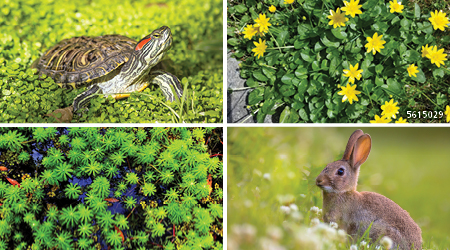May is here, and with it comes Invasive Species Action Month—an annual opportunity for the City of Richmond to raise awareness about the impacts of invasive species in the community and all over British Columbia. Invasive species are plants and animals that have been introduced to the local environment and, once established, pose significant and negative ecological, social and economic impacts.
Richmond’s Invasive Species Action Plan identifies eight priority invasive species, including knotweed, giant hogweed, parrots feather, fire ants, common reed, European chafer beetle, Japanese beetle and scotch broom because of their risk to health and safety, infrastructure and the environment. Throughout May, a series of weekly social media posts will promote Invasive Species Action Month by showcasing these species, highlighting City and provincial programs, and recognizing local stewardship initiatives in Richmond.
Each week will feature a specific theme:
- Alternative lawn options for managing European chafer beetles
- City support for private property owners dealing with knotweed and giant hogweed
- Japanese beetle management strategies
- Relaunching the City’s Nectar Trail Campaign
- City-led projects and upcoming invasive species stewardship events
For all of the details, follow the City’s social media accounts (Facebook, Instagram, Bluesky and X).
Residents can also learn more by visiting displays set up at South Arm Community Centre (8880 Williams Road), the Seniors Centre at Minoru Centre for Active Living (7191 Granville Avenue) and Brighouse Library (100-7700 Minoru Gate).
Education is the best defense against new invaders. Learn how to properly manage invasive species and prevent them from spreading. Everyone has an important part to play in invasive species management in the community.
For more information, visit richmond.ca/invasives.


